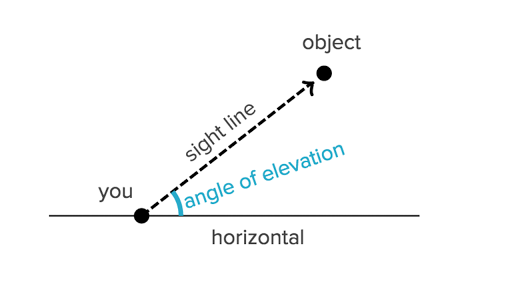CBSE Maths Formula Class 10 Some Applications of Trigonometry Chapter 9
Some Applications of Trigonometry
Line of sight and horizontal level

Line of sight is the line drawn from the eye of the observer to the point on the object viewed by the observer.
The horizontal level is the horizontal line through the eye of the observer.
Height and Distance
Definition The angle of elevation of the point on the object (above horizontal level) viewed by the observer is the angle which is formed by the line of sight with the horizontal level.
Angle of elevation

The angle of elevation is relevant for objects above horizontal level.
It is the angle formed by the line of sight with the horizontal level.
Angle of elevation
Definition: The angle of elevation is an angle that is formed between the horizontal line and the line of sight. If the line of sight is upward from the horizontal line, then the angle formed is an angle of elevation.
Calculating Heights and Distances
To, calculate heights and distances, we can make use of trigonometric ratios.
Step 1: Draw a line diagram corresponding to the problem.
Step 2: Mark all known heights, distances and angles and denote unknown lengths by variables.
Step 3: Use the values of various trigonometric ratios of the angles to obtain the unknown lengths from the known lengths.